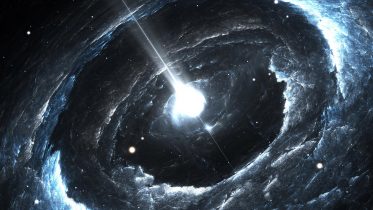Crab Pulsar
The Crab Pulsar is a relatively young neutron star. The star is the central star in the Crab Nebula, a remnant of the supernova SN 1054, which was widely observed on Earth in the year 1054. Discovered in 1968, the pulsar was the first to be connected with a supernova remnant. The Crab Pulsar is one of very few pulsars to be identified optically. The optical pulsar is roughly 20 kilometres in diameter and has the rotational period about 33 milliseconds, that is, the pulsar "beams" perform about 30 revolutions per second. The outflowing relativistic wind from the neutron star generates synchrotron emission, which produces the bulk of the emission from the nebula, seen from radio waves through to gamma rays. The most dynamic feature in the inner part of the nebula is the point where the pulsar's equatorial wind slams into the surrounding nebula, forming a termination shock.


